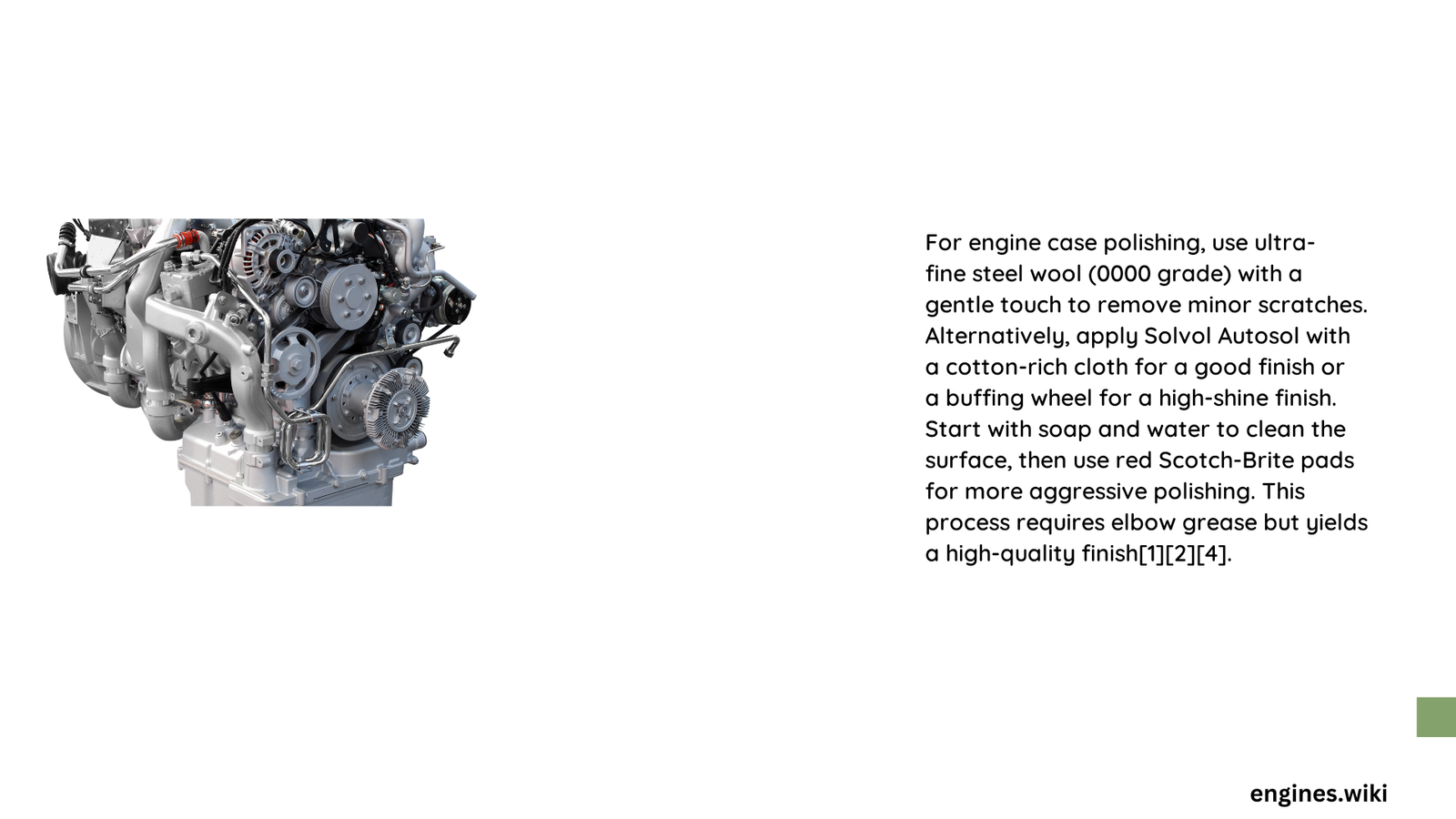Engine case polishing is a critical precision technique that transforms rough, oxidized metal surfaces into smooth, corrosion-resistant masterpieces. By employing specialized methods like porcelain bead micro-peening, burnishing compounds, and strategic buffing, automotive enthusiasts and professionals can restore engine cases to their pristine condition, enhancing both aesthetic appeal and long-term durability.
What Makes Engine Case Polishing Critical?
Engine cases are exposed to extreme environmental conditions, accumulating oxidation, corrosion, and performance-limiting surface imperfections. Proper polishing not only improves visual aesthetics but also:
- Reduces friction
- Prevents further corrosion
- Enhances heat dissipation
- Improves overall engine performance
Why Choose Specific Polishing Techniques?
Different metal compositions require unique approaches:
Magnesium Case Polishing Strategy
| Technique | Duration | Effectiveness |
|---|---|---|
| Hot Tank Cleaning | 1-2 hours | Removes initial grime |
| Soda Blasting | 1-3 hours | Eliminates heavy oxidation |
| Porcelain Bead Polishing | 2-5 hours | Seals porous surfaces |
| Burnishing Compound Application | 1-2 hours | Final refinement |
Key Considerations for Magnesium:
– Use 3mm porcelain beads
– Apply micro-peening technique
– Utilize specialized burnishing compounds
Aluminum Case Polishing Approach
Essential Tools:
– Fine Scotch Brite pads
– Anti-corrosive gel
– Aluminum polishing compounds
– Buffing wheels
How to Select Proper Polishing Equipment?
Professional-grade equipment ensures superior results:
- Ultrasonic Cleaners
- Removes microscopic contaminants
- Price range: $100-$500
-
Ideal for delicate components
-
Media Blasters
- Controlled surface preparation
- Versatile media compatibility
-
Price range: $100-$500
-
Electric Buffers
- Consistent polishing action
- Recommended brands: Foredom, DeWalt
- Price range: $50-$500
What Safety Precautions Are Essential?
Personal Protective Equipment (PPE):
– Safety glasses
– Chemical-resistant gloves
– Dust mask
– Protective coveralls
Workspace Requirements:
– Well-ventilated area
– Dust extraction system
– Clean, organized workspace
Pro Tips for Exceptional Results
- Always start with thorough cleaning
- Use progressively finer polishing media
- Monitor surface temperature during polishing
- Apply protective coatings after polishing
Final Recommendations

Successful engine case polishing demands patience, precision, and proper technique. Invest in quality tools, understand your specific metal composition, and follow systematic approaches for outstanding results.
Potential Challenges to Anticipate
- Uneven surface textures
- Risk of over-polishing
- Material-specific limitations
- Potential thermal stress
By mastering these techniques, you’ll transform ordinary engine cases into high-performance, visually stunning components.
References:
1. Pelican Parts Forum – Magnesium Transmission Polishing
2. YouTube – Corrosion Minimization Techniques
3. Everything2Stroke Forum – Magnesium Polishing
